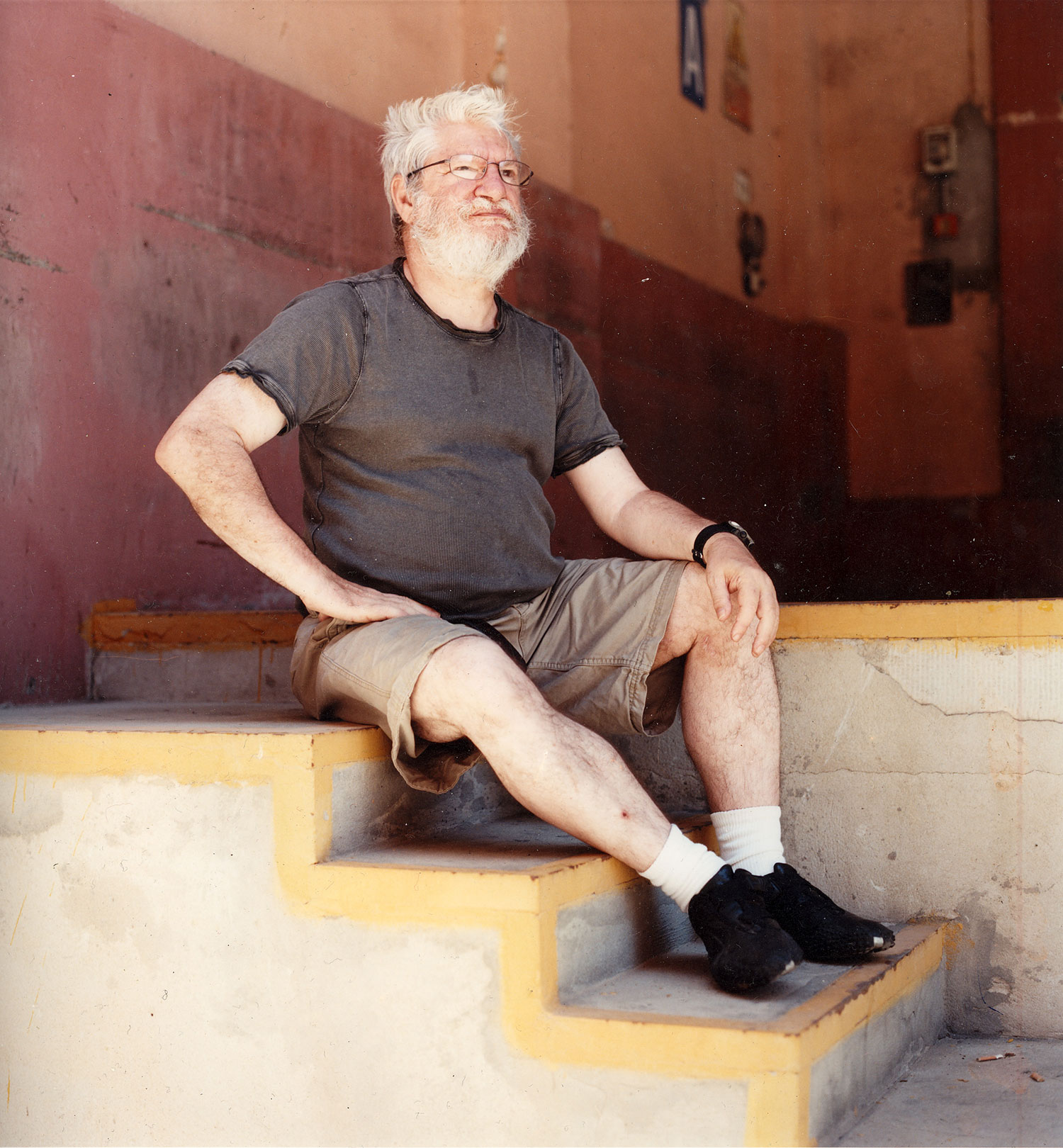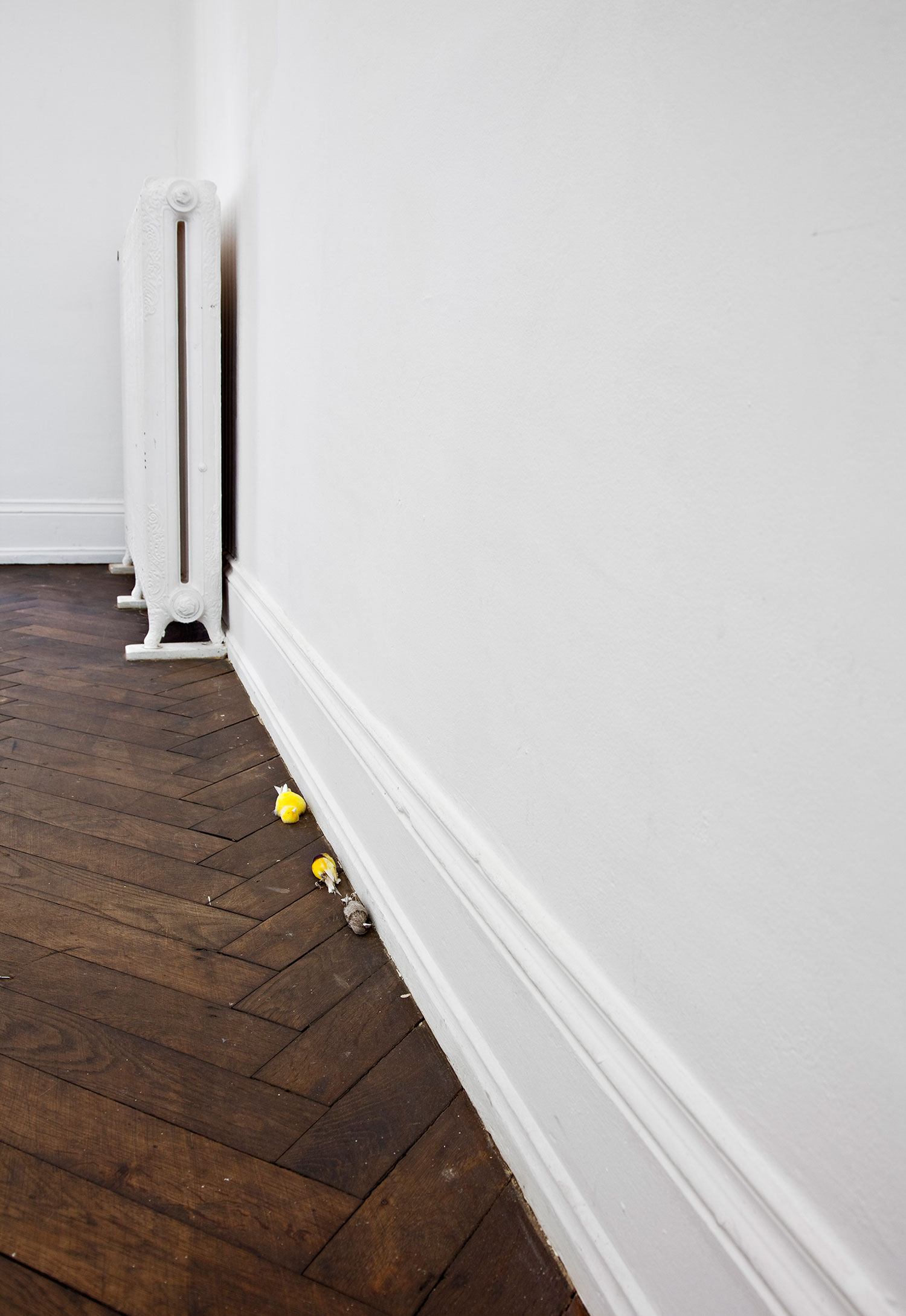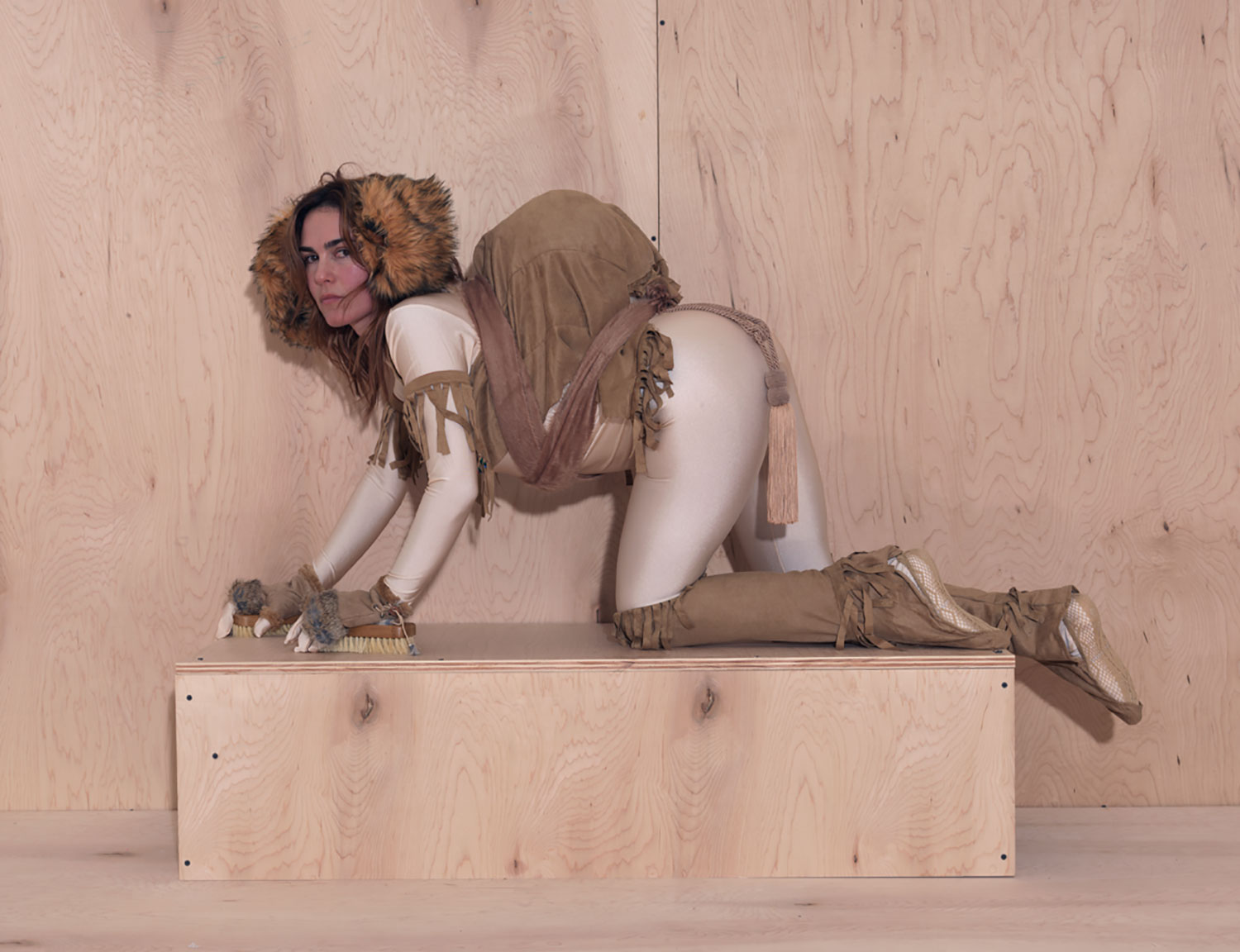
Umberta Genta: What makes your work ironic, seductive and somehow serious at the same time?
Stefan Brüggemann: Irony is another way to raise questions. In addition, I like contradiction. These elements are always very present in my work, which talks about ideas and about the concept of an idea. And then on the other side there’s the image and the seduction of communication expressed through forms and pictures. Sometimes I consider my work as “conceptual pop:”two ideas that hate each other, put together to create a kind of tension over whether you’re seeing an idea, a form, a drawing, a sculpture…
UG: I presume that the seduction also comes from the scale of your work, as in the text piece on the façade of the Bass Museum in Miami, unveiled during Art Basel Miami, THIS IS NOT SUPPOSED TO BE HERE (2001).
SB: Exactly. The premise of conceptual art has always been the invisibility of art, the immateriality of art. But at the end of the day, art comes through the eyes, you have to look at it. The introduction to a concept is something visual. At the same time this piece makes you think of something invisible. In my text pieces, like “Looks Conceptual” for example, it’s all about the appearance of something on the one side, and about the concept of it on the other. The “Looks Conceptual series criticizes the tradition of conceptual art. But I’m not against conceptual art itself.
UG: You couldn’t possibly. Your work is conceptual.
SB: Yes. But things have changed since the ’70s. Society has changed. So instead of having a nostalgic quotation about conceptual art or the history of art material, my work is more about activating it in the present context.
UG: Nowadays anything can get appropriated by anyone through the Internet.
SB: Totally. It’s a different world. Appropriation happens every day. The economic world is about appropriating systems. Think about the people in the street: on the average, they dress more or less the same.

UG: Tell me more about the concept of appropriation in your canvas work, the “Joke and Definition Paintings.”
SB: They’re an appropriation of a joke painting by Richard Prince and Joseph Kosuth’s definitions. I wanted to put them one on top of the other, making a piece where I did not have any aesthetic decision to make. All decisions were taken by other artists. I’m fascinated with working with the tradition of appropriation and the readymade. Kosuth took a readymade from a dictionary, Richard Prince from a magazine, but they made art by placing them on canvas. My decision is only to put them together, making an intellectual decision that changes everything.
UG: Taking possession of other artists’ works is easy to attack.
SB: It happens all the time. Some people judge art by the technique, so if you draw it, it’s art. For me, it is more important if you think of it. I like the fact that people question my work. I like the fact that it seduces, but that the content is provocative and aggressive at the same time. And you never know what you’re looking at. Those colors were chosen by Richard Prince, after all…
UG:Tell me about Conceptual Decoration.
SB: It’s black-and-white wallpaper. The letter size is ten points, the right size for you to read a title in a book. From a distance, this becomes almost like a gray surface, invisible. In order to see it, you need two moments: when you are close, and you forget about space and enter a more literal space; and when you are at a distance, and the piece becomes more of a surface, more physical.
UG: You made Conceptual Decoration in a neon version as well. Why?
SB: Because in neon this becomes quite a cynical piece. Bruce Nauman did a kind of “vulgarity” using neon, when he did the pornographic silhouettes. I wanted to use the vulgarity of this tradition of conceptual art, and so I made Conceptual Decoration in all the different colors of neon.
UG: I guess this piece shows a degree of cynicism also towards the person who hangs this piece in a private interior.
SB: I guess so. The work is about the contradiction between vulgarity — wherein art becomes a commodity — and a visually austere effect.
UG: Joke paintings aside, tell me about the language you use in your text work in general. Do all the texts originate from your own thinking?
SB: They’re my original writing, but they’re not too many. It takes me a while to write something specific.

UG: You seem absorbed with mirrors lately. The piece you showed at the Museo Tamayo during “Primer Acto” (2012) is a big mirror with very small text saying, “This work is realized when you stop looking at it.” And there are mirrors in your intervention at the Mies van der Rohe Pavilion.
SB: The mirror is like escapism; it shows the image of something that happens somewhere else. I like that the work exists when you are not looking at it. In that way you never know what the work is, conceptually speaking. They asked me where I would like to do an intervention in a public space, and I always loved the Mies van der Rohe Pavilion. I think in the end my work likes to observe the society we live in. The pavilion was made for the World’s Fair, in which all countries take part. Obviously it’s an icon of contemporary architecture, so I decided to call it The World Trapped in the Self. I think that in the Western world everything is so individualistic that we are trapped in ourselves. I wanted to build a sort of cage where, as soon as you enter, you are trapped in mirrors, with only yourself reflected. I replaced the windows with mirrors, and put mirrors on the outside and on the inside. It became a box of mirrors. If you want, this was a political statement, about how politics tries to offer a solution, when the truth is there’s no way out. It’s just a reflection. Inside the building, you were trapped in your own existence.
UG: Is all art political in a way?
SB: Art is about communication; so all art is political in a way. I’m not calling for a strike, a revolution, or knocking the government down. It is more about the individual, the existential question, about how society works. I make observations about that. There is a type of art that enacts a political fight. Sometimes I feel sorry for these artists; if you want to do political activism, art is the most elitist place to do it. All the people you hate are the ones who support the arts. Art has a very limited public. For something political, Facebook gives more results.
UG: How do you expect viewers to respond to the mirror pieces?
SB: I want to put them in an existential position. In the “Obliterated Mirrors” I paint on the mirror, trying to cover as much as possible so when you look at the work you see a bit of yourself but not completely, it’s like youre erasing yourself, blocking any type of communication. In “Text Pieces, Obliterated Mirror & Tautological Paintings”(2012) I displayed some text pieces with obliterated mirrors on top. I thought it would be good to obliterate and sabotage the show, or add more layers.
UG: It seems like a total work of art. The “Tautological Paintings” show their prices, all in the range of $10,000, written in the same size, right in the middle of the canvas.
SB: This is related to the work of On Kawara, who painted the dates. Today I think that prices mark the time. In the secondary art market things can change easily, and I’m fascinated by these fluctuations of value. And who knows, maybe dollars will disappear one day.
UG: Do you follow the art market?
SB: Not really. I’m just being cynical. People seem to look more at the price than the work itself.
UG: You were born in Mexico City, your father is German, and you’ve been living in London for twelve years now. How did this background influence your practice?
SB: My parents were archeologists in Mexico. In Mexico there is this idea of “exotic:” the art has to be exotic. It’s as if, in order to feel that it is Latin American, art has to be almost like a sort of Arte Povera, a poetic and magical thing in which you talk about violence or poverty. But Mexican art is also something else. I didn’t want to do an exotic art. I wanted to be part of the world, and the dominant figures were obviously Europe and America. Also I was traveling to Germany all the time, as I keep doing nowadays. I was influenced a lot by punk music when I was young, which was always in English, and I think that changed my way of thinking as a teenager, even if I didn’t live it. You can still listen to the Sex Pistols today, and they make a difference.
UG: What’s “exotic” to you?
SB: It’s a very safe place to be. You talk about things that are not understandable, and that becomes exotic.
I believe in the other way round: I want to communicate as much as possible, and that’s why I use the English language.
UG: Do you ever feel unrooted?
SB: Totally. That’s part of our generation, I guess. We spend a lot of time everywhere and nowhere. Maybe we’ll get lost in the end, but it’s part of our reality. I am not completely Mexican, nor completely German. If I wanted to be a candidate for the president in Mexico I wouldn’t have the right name!
UG: Do you think that there are underappreciated Mexican artists?
SB: I am one, for the reasons above mentioned! In a strictly Mexican context, I would never get to the Mexican Pavilion at the Venice Biennale, for example. At least, not very soon.





